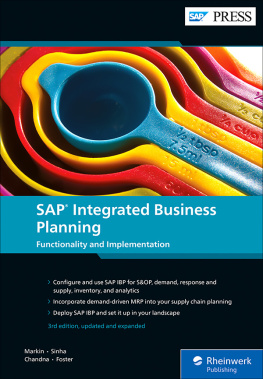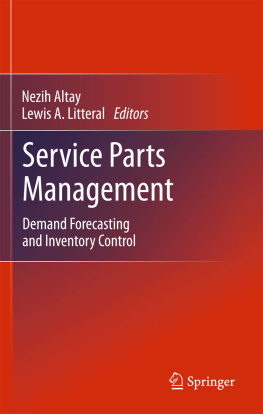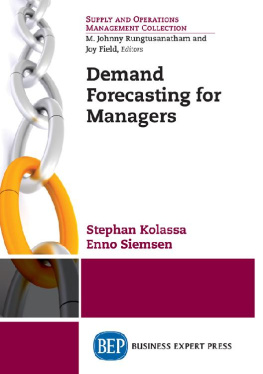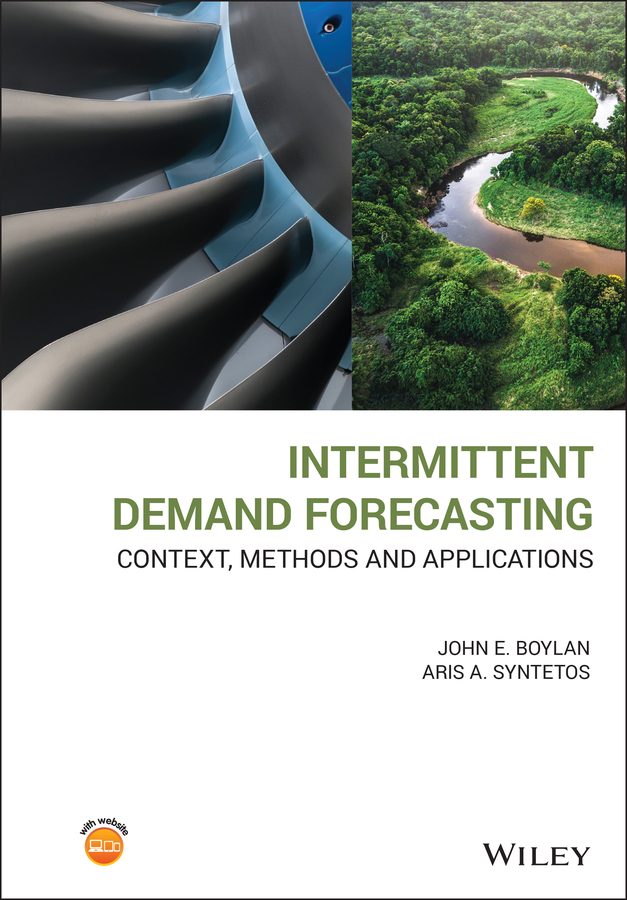John E. Boylan - Intermittent Demand Forecasting: Context, Methods and Applications
Here you can read online John E. Boylan - Intermittent Demand Forecasting: Context, Methods and Applications full text of the book (entire story) in english for free. Download pdf and epub, get meaning, cover and reviews about this ebook. year: 2022, publisher: Wiley, genre: Children. Description of the work, (preface) as well as reviews are available. Best literature library LitArk.com created for fans of good reading and offers a wide selection of genres:
Romance novel
Science fiction
Adventure
Detective
Science
History
Home and family
Prose
Art
Politics
Computer
Non-fiction
Religion
Business
Children
Humor
Choose a favorite category and find really read worthwhile books. Enjoy immersion in the world of imagination, feel the emotions of the characters or learn something new for yourself, make an fascinating discovery.

- Book:Intermittent Demand Forecasting: Context, Methods and Applications
- Author:
- Publisher:Wiley
- Genre:
- Year:2022
- Rating:4 / 5
- Favourites:Add to favourites
- Your mark:
Intermittent Demand Forecasting: Context, Methods and Applications: summary, description and annotation
We offer to read an annotation, description, summary or preface (depends on what the author of the book "Intermittent Demand Forecasting: Context, Methods and Applications" wrote himself). If you haven't found the necessary information about the book — write in the comments, we will try to find it.
The first text to focus on the methods and approaches of intermittent, rather than fast, demand forecasting
Intermittent Demand Forecasting is for anyone who is interested in improving forecasts of intermittent demand products, and enhancing the management of inventories. Whether you are a practitioner, at the sharp end of demand planning, a software designer, a student, an academic teaching operational research or operations management courses, or a researcher in this field, we hope that the book will inspire you to rethink demand forecasting. If you do so, then you can contribute towards significant economic and environmental benefits.
No prior knowledge of intermittent demand forecasting or inventory management is assumed in this book. The key formulae are accompanied by worked examples to show how they can be implemented in practice. For those wishing to understand the theory in more depth, technical notes are provided at the end of each chapter, as well as an extensive and up-to-date collection of references for further study. Software developments are reviewed, to give an appreciation of the current state of the art in commercial and open source software.
Intermittent demand forecasting may seem like a specialized area but actually is at the center of sustainability efforts to consume less and to waste less. Boylan and Syntetos have done a superb job in showing how improvements in inventory management are pivotal in achieving this. Their book covers both the theory and practice of intermittent demand forecasting and my prediction is that it will fast become the bible of the field.
Spyros Makridakis, Professor, University of Nicosia, and Director, Institute for the Future and the Makridakis Open Forecasting Center (MOFC).
We have been able to support our clients by adopting many of the ideas discussed in this excellent book, and implementing them in our software. I am sure that these ideas will be equally helpful for other supply chain software vendors and for companies wanting to update and upgrade their capabilities in forecasting and inventory management.
Suresh Acharya, VP, Research and Development, Blue Yonder.
As product variants proliferate and the pace of business quickens, more and more items have intermittent demand. Boylan and Syntetos have long been leaders in extending forecasting and inventory methods to accommodate this new reality. Their book gathers and clarifies decades of research in this area, and explains how practitioners can exploit this knowledge to make their operations more efficient and effective.
Thomas R. Willemain, Professor Emeritus, Rensselaer Polytechnic Institute.
John E. Boylan: author's other books
Who wrote Intermittent Demand Forecasting: Context, Methods and Applications? Find out the surname, the name of the author of the book and a list of all author's works by series.









![Galit Shmueli - Practical Time Series Forecasting: A Hands-On Guide [2nd Edition]](/uploads/posts/book/82184/thumbs/galit-shmueli-practical-time-series-forecasting.jpg)


